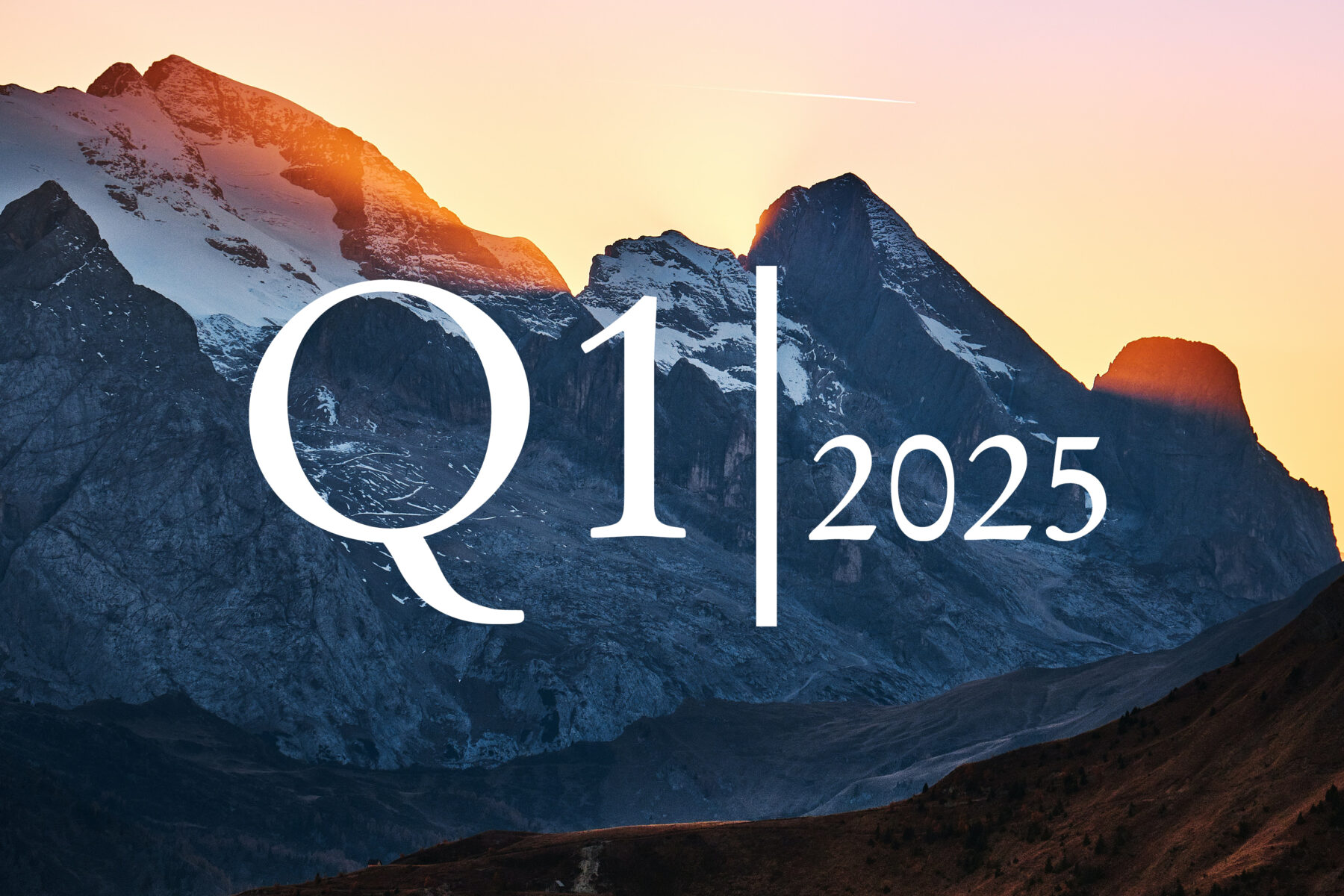In a nutshell
US equities significantly outperformed all other equities in 2024. This clear divergence is unlikely to be repeated in 2025 for various reasons.
2025 is likely to be characterised by increasing M&A activity. European small caps in particular are likely to be targets due to the weak euro and favourable valuations. Market breadth should be correspondingly healthy in 2025, in line with a robust global economy. However, the upside potential for global equities is likely to be limited.
US equities clearly outperform in the fourth quarter
Our decision to add to US equities in the run-up to and immediately after the US elections paid off. With Donald Trump’s election victory, the market also played out its “America First” policy. This was doubly profitable for euro investors invested in US equities. Not only did US equities rise sharply, but so did the US dollar. US small caps have gained more than 13% in euro terms so far in Q4. European and Asian equities, on the other hand, showed a volatile sideways trend in the same period. The difference in performance between US and European equities in 2024 is more than 23%, a record in this millennium.
US equities had never outperformed as strongly in this millennium as they did in 2024
Less regional performance divergence in 2025
With Donald Trump’s victory in the US election, there is still a lot to be said in favour of US equities. After all, the new US president wants to advocate lower taxes, deregulation and an “America First” policy (including import tariffs) to strengthen the domestic economy. He also sees the stock market as a good barometer for his political successes, as we know from his first term in office. So there is a kind of Trump put similar to the Fed put. The president and the central bank have a vested interest in a robust S&P 500. After all, a rising stock market is accompanied by better corporate and consumer sentiment as well as higher tax revenues. Coupled with the great innovative strength of US companies in future technologies such as artificial intelligence, this clearly speaks in favour of US equities. However, we expect the divergence between US and European equities to narrow significantly in 2025, for several reasons. Although the majority of economists still expect the US economy to grow faster than the eurozone, they also expect the growth advantage to halve from around 2% in real GDP in 2024 to around 1% in 2025. Analysts take a similar view with regard to earnings estimates for 2025, with just under 15% expected for the US and just under 9% for the eurozone. By contrast, the expected earnings growth for 2024 is around 10% for the US and only around 1% for the eurozone. For European equities, there are many stumbling blocks and risks in addition to the threat of a trade war with China’s weakness, the local economic slowdown, higher energy prices and the war in Ukraine. However, these are already reflected in share prices in the form of high risk premiums. Europe is currently trading at a record-high valuation discount of around 40% to US equities on a P/E basis. Given the record-high profit margins and the current P/E valuations of US equities, the starting position is more difficult than it was under Trump eight years ago. Around USD1.1trn has flowed into US equity funds and ETFs since the beginning of this decade. The rest of the world has seen inflows of less than USD250bn in the same period. The extreme positioning and valuation are therefore susceptible to positive surprises from Europe and negative surprises from the US. An imminent end to the war in Ukraine and the Middle East could be a positive surprise. In addition, the favourable financial conditions (weak euro versus strong US dollar, widening interest rate differential between the US and Europe) should provide relative support for European companies.
US equities with significantly higher expectations under Trump 2.0
P/E valuation based on earnings estimates for the next 12 months for US equities and the corresponding profit margin expectations
Healthy market breadth in 2025 – also thanks to increased M&A activity
The weak euro and favourable valuations should make European companies attractive for private equity and foreign companies, particularly in the small cap sector. In the US, the imminent tax certainty for companies and a wave of deregulation are likely to boost not only the M&A market but also IPO activity. In addition to the robust economic environment, all of this should lead to a decent market breadth in 2025, in which second-line stocks are also likely to shine. For the S&P 500, we do not see any further valuation expansion in 2025, meaning that earnings are likely to be limited to earnings growth at most. For the rest of the world, it depends heavily on how many risks materialise. If many fail to materialise, European and emerging market equities should also receive support from valuation increases.
Forecast summary: Moderate upside potential for 2025
Berenberg and consensus forecast in comparison, values for mid-2025 and year-end 2025
What is on companies' minds?
AI as a growth driver
AI, interest rates and the potential trade war dominated our discussions with companies in the past quarter. In the semiconductor industry, the wheat is being separated from the chaff. The broad sector is suffering from a sequential slowdown in China and only AI beneficiaries such as Marvell and TSMC are showing strength alongside Nvidia. Investors have therefore increasingly rotated into software companies in recent weeks – partly because they would be less affected by potential trade disputes and they expect further growth from AI applications in 2025. The expansion of data centres is also accelerating as a result of AI, and energy consumption is rising again for the first time after decades of stagnation in the US and Europe. On the other hand, fears of a trade war and the resulting potentially sharper fall in interest rates in Europe have put pressure on bank share prices, while stock exchange operators have benefited from the recent increase in market volatility. The prospect of further interest rate cuts has not yet contributed to an improvement in the order situation in the construction industry. On the consumer side, the negative trends have continued sequentially with a few exceptions, and the automotive industry in particular is currently struggling.
- Matthias Born, CIO Equities
Author

Ulrich Urbahn
Ulrich Urbahn has been working for Berenberg since October 2017 and is responsible for quantitative analyses and the devel-opment of strategic and tactical allocation ideas, and is involved in capital market communications. He is a member of the Asset Allocation Committee and portfolio manager of the Berenberg Variato. After graduating in economics and mathematics from the University of Heidelberg, he worked for more than 10 years at Commerzbank, among others, as a senior cross asset strate-gist. Mr Urbahn is a CFA charterholder and was part of the three best multi-asset research teams worldwide in the renowned Extel survey for many years.


